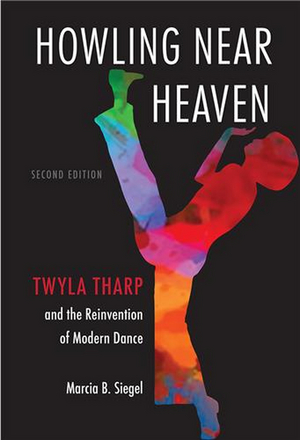Review: Twyla Tharp and the Reinvention of Modern Dance by Marcia B. Siegel

Assigning shape and motivation to New York-based dance institutions can be a sisyphean task for the historian. Many are maddeningly haphazard, the aesthetic shifts incredibly jarring, and the community networks so unorthodox that, to the untrained eye, it can feel like the artistic equivalent of throwing spaghetti at the wall. In "Howling Near Heaven: Twyla Harp and the Reinvention of Modern Dance," Marcia B. Siegel expertly reads direction and purpose into the chaos of Tharp's career from the '60s at Judson to her commercial successes decades later.
Ms. Tharp carved a name for herself as one who rebelled against the avant-garde while remaining part of their ranks. Siegel doesn't just keep her view on macro cultural dynamics, but immerses herself into the necessary choices made by the choreographer during her ascendency in the art world. Dancer availability, difficulties with spaces, and audience expectations are all sourced, analyzed, and exhibited. Above all, Siegel's work is engaged with the advent of an oeuvre. The particular expression of Tharp is shelved for a more cause and effect view on choreographic construction. The viewpoint is of an artistic environment and a choreographer's adaptation as they pass from fringe to icon.
Tharp is an artist to be appreciated at a distance, as I am sure she'd prefer it. However, her aesthetic seems to take no joy in making enemies. It welcomes the approachability of popular music, the plasticity of modernism, and the athleticism of ballet. Ultimately, this eclecticism marks her work as distinctly American and distinctly of its era. Tharp's oeuvre doesn't vault into the void of timelessness but is purposefully crafted to exist within its present moment. Even her Broadway hit, "Moving Out," a musical set during the Vietnam War, resonates more with the context of the recent attacks of 9/11. The obvious approachability of the work, especially a jukebox Billy Joel Broadway musical, gives off an impression of a lack of artistic ambition that doesn't speak or grasp the choreographer's talent.
To put Tharp in the canon of late 20th-century dance feels essential, but she seems to elude the usual mechanics of canonization. She had no Wuppertal, no NYCB, and no state of the art studio in Hell's Kitchen to call home. Witty, individualistic, and approachable, the modernist austerity of her work comes only in the execution of the choreographic composition. In this book, Siegel is able to integrate Tharp's contribution and status of icon within the world of American Modernist dance.
Reader Reviews
Videos

